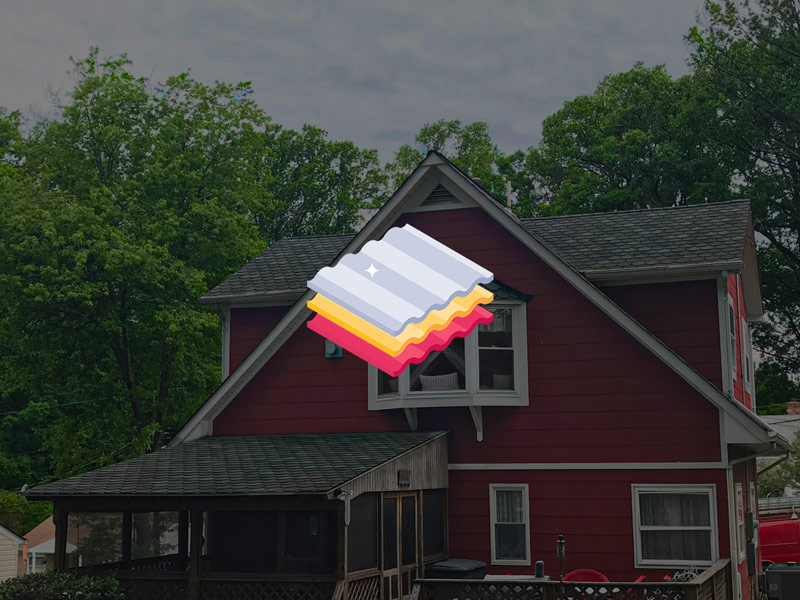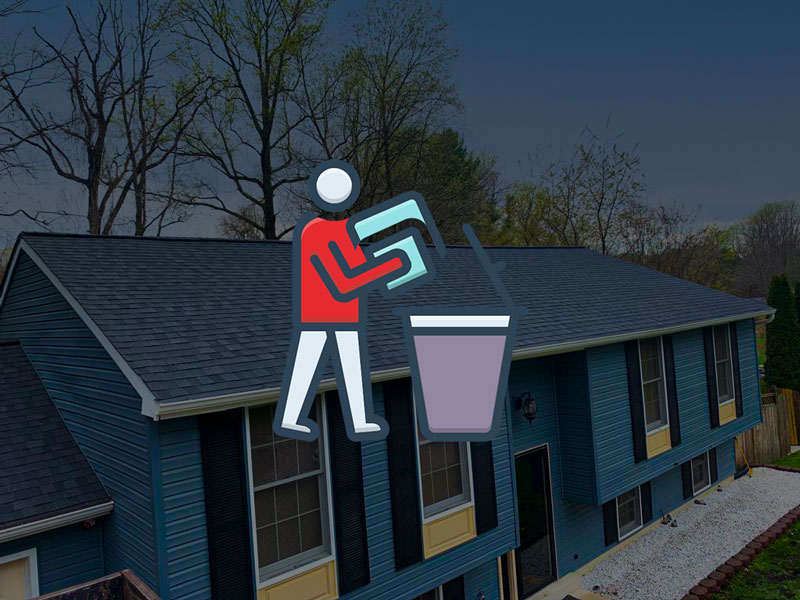Steps to Replace a Roof | Guide to Successful Roof Replacement
Approaching a roof replacement with the right techniques is key to ensuring the longevity and reliability of your new roof. From selecting the appropriate roofing material to following precise installation methods, every aspect counts. Proper roofing techniques involve thorough inspection, meticulous planning, and adherence to local regulations and permits. Moreover, choosing quality materials and employing skilled professionals can greatly impact the durability of your roof and the steps to replace a roof.

Roof Inspection and Assessment
Before embarking on a roof replacement journey, a thorough roof inspection and assessment is paramount to ensure a successful outcome. This crucial step sets the foundation for making informed decisions and outlining the necessary actions moving forward.
Assessing the Current Roof Condition
Begin by closely examining the existing roof’s condition. Look for telltale signs of wear and tear, such as cracked or missing shingles, water stains, and moss growth. Pay special attention to any areas where the roof might be sagging or showing signs of structural compromise. This initial assessment provides a clear picture of the extent of damage and guides subsequent actions.
Identifying Common Roofing Problems
In this phase, identify common roofing problems that could potentially undermine the new roof’s integrity. Issues like inadequate ventilation, improper flashing, or poor drainage can lead to long-term complications. Addressing these problems during the replacement process contributes to the overall health of your new roof and extends its lifespan.
Determining Whether a Replacement is Necessary
Based on the assessment, evaluate whether a full replacement is needed. Sometimes, repairs or minor fixes might suffice. However, if the roof’s fundamental structure is compromised or multiple issues are present, opting for a replacement becomes a prudent choice. Balancing repair costs against the benefits of a fresh start is essential.
Considering Roofing Materials and Options
Once the decision for replacement is made, it’s time to explore various roofing materials and options available. From traditional asphalt shingles to metal or slate, each material offers distinct advantages in terms of durability, aesthetics, and cost. Consider your home’s architectural style, climate conditions, and personal preferences when making this choice.

Roof Preparation
Proper roof preparation is the cornerstone of a successful roof replacement project. This phase involves obtaining necessary permits, setting up a safe work environment, and gathering the tools and materials essential for a smooth and efficient process.
Obtaining Necessary Permits and Regulations
Before you begin, check with local authorities to ensure you have all the required permits and adhere to regulations. These permits ensure that your roof replacement follows safety and zoning guidelines. Being compliant from the start helps you avoid potential setbacks and legal issues down the road.
Clearing the Work Area and Ensuring Safety
Creating a safe and clutter-free work area is crucial to avoid accidents and facilitate smooth operations. Remove any obstacles that could hinder the work process, and clearly mark off the area to alert residents and visitors. Safety measures like using proper signage, barriers, and personal protective equipment (PPE) contribute to a secure work environment.
Gathering Essential Tools and Materials
To carry out a successful roof replacement, gather all the essential tools and materials you’ll need. This includes roofing materials, shingles, underlayment, nails, tools like hammers, roofing nail guns, and safety equipment. Having everything organized and ready before starting reduces downtime and ensures a seamless workflow.
Protecting Your Property During the Roof Replacement
During the roof replacement, it’s crucial to take steps to protect your property from potential damage. Cover windows, landscaping, and other vulnerable areas to prevent debris or falling materials from causing harm. Additionally, communicate with your roofing team about strategies to minimize any disruption to your daily life.

Removing the Old Roofing Material
Roof Stripping Techniques
In this crucial phase of replacing a roof, the existing roofing material needs to be carefully stripped away to make room for the new. Depending on the material used, various roof stripping techniques can be employed. For asphalt shingles, a shingle scraper or pitchfork can be utilized to gently lift and remove the old shingles. Metal roofs might require a different approach, often involving removing screws or clips to detach panels. Prioritize precision and caution to avoid causing any unintentional damage to the roof deck.
Proper Disposal of Old Roofing Materials
As you strip the old roofing material, it’s essential to focus on proper disposal. Responsible disposal not only contributes to environmental conservation but also ensures a clean and organized work area. Local regulations might dictate specific disposal methods, such as recycling or designated waste centers. Consider renting a dumpster or arranging for a waste removal service to efficiently handle the debris.
Inspecting the Roof Deck for Damage
With the old roofing material removed, it’s an opportune time to inspect the roof deck for damage. Carefully examine the deck for signs of rot, water damage, or structural issues. Addressing these problems early prevents the new roof from being compromised by underlying issues. It’s advisable to consult with a professional roofing contractor to accurately assess any damage and determine the necessary repairs before proceeding.

Roof Installation
Choosing the Right Roofing Material
Selecting the ideal roofing material is a pivotal decision in the roof replacement process. Each material has its own unique qualities, offering different levels of durability, aesthetics, and cost-effectiveness. Whether you opt for traditional asphalt shingles, energy-efficient metal roofing, or the classic charm of slate, consider your climate, architectural style, and budget. This choice sets the stage for the overall look and performance of your new roof.
Roof Underlayment and Ventilation Considerations
Before laying down the primary roofing material, pay attention to the roof underlayment and ventilation. The underlayment acts as an additional barrier against moisture and enhances the roof’s overall integrity. Adequate ventilation is also critical, as it prevents excessive heat and moisture buildup that can lead to damage. Proper ventilation contributes to the longevity of your roof and the comfort of your living spaces.
Shingle Installation or Roofing Material Application
Whether you’re installing shingles, metal panels, or another roofing material, proper installation techniques are paramount. During this phase, meticulous attention to detail ensures a water-tight and resilient roof. Ensure uniformity, proper alignment, and secure fastening to prevent future leaks or damage. Following the manufacturer’s guidelines and industry best practices guarantees a high-quality outcome.
Flashing and Sealing Critical Roof Areas
Flashing and sealing play a crucial role in maintaining a weather-resistant roof. Flashing is used around roof openings such as chimneys, vents, and skylights to prevent water infiltration. Sealing these critical areas with durable materials like caulk or sealant adds an extra layer of protection against potential leaks. Ensuring that these points are watertight contributes to the overall effectiveness of your new roof.
Ridge Cap and Edge Detailing
The ridge cap and edges of your roof demand special attention to ensure a complete and polished finish. The ridge cap covers the peak of the roof, preventing water from entering through this vulnerable area. Properly sealing and securing the ridge cap guarantees its longevity. Edge detailing involves carefully sealing and securing the edges of the roof to prevent wind uplift and water penetration.

Final Inspections and Clean-Up
As you approach the culmination of the roof replacement journey, the importance of thorough final inspections and meticulous clean-up cannot be overstated. This phase ensures that your new roof not only looks impeccable but also performs reliably for years to come.
Post-Installation Roof Inspection
Conducting a comprehensive post-installation roof inspection is a pivotal step to confirm that the replacement process has been executed flawlessly. Carefully examine the entire roofing system, from the newly installed materials to the critical joints and connections. Look for any signs of irregularities, misalignments, or potential issues that might compromise the roof’s functionality.
Quality Assurance and Addressing Any Issues
During the post-installation inspection, if any discrepancies or issues are identified, address them promptly. Whether it’s a loose shingle, a minor gap, or any other imperfection, ensuring these concerns are rectified immediately contributes to the overall quality and longevity of your new roof. A proactive approach at this stage eliminates future headaches and ensures a job well done.
Cleaning Up the Worksite
Once the roofing work is complete, it’s time to prioritize a thorough clean-up of the worksite. Removing debris, leftover materials, and discarded tools not only tidies up the area but also contributes to safety. A clean worksite signifies a professional approach and leaves a positive impression on your property.
Providing Roof Maintenance Guidelines for Longevity
As your new roof takes its place, it’s essential to equip yourself with knowledge about roof maintenance guidelines that enhance its lifespan. Regular maintenance, such as cleaning gutters, inspecting for damage, and addressing minor repairs, ensures that your investment continues to provide reliable protection. These practices promote the roof’s long-term performance and minimize potential issues down the road.
Please Share!






